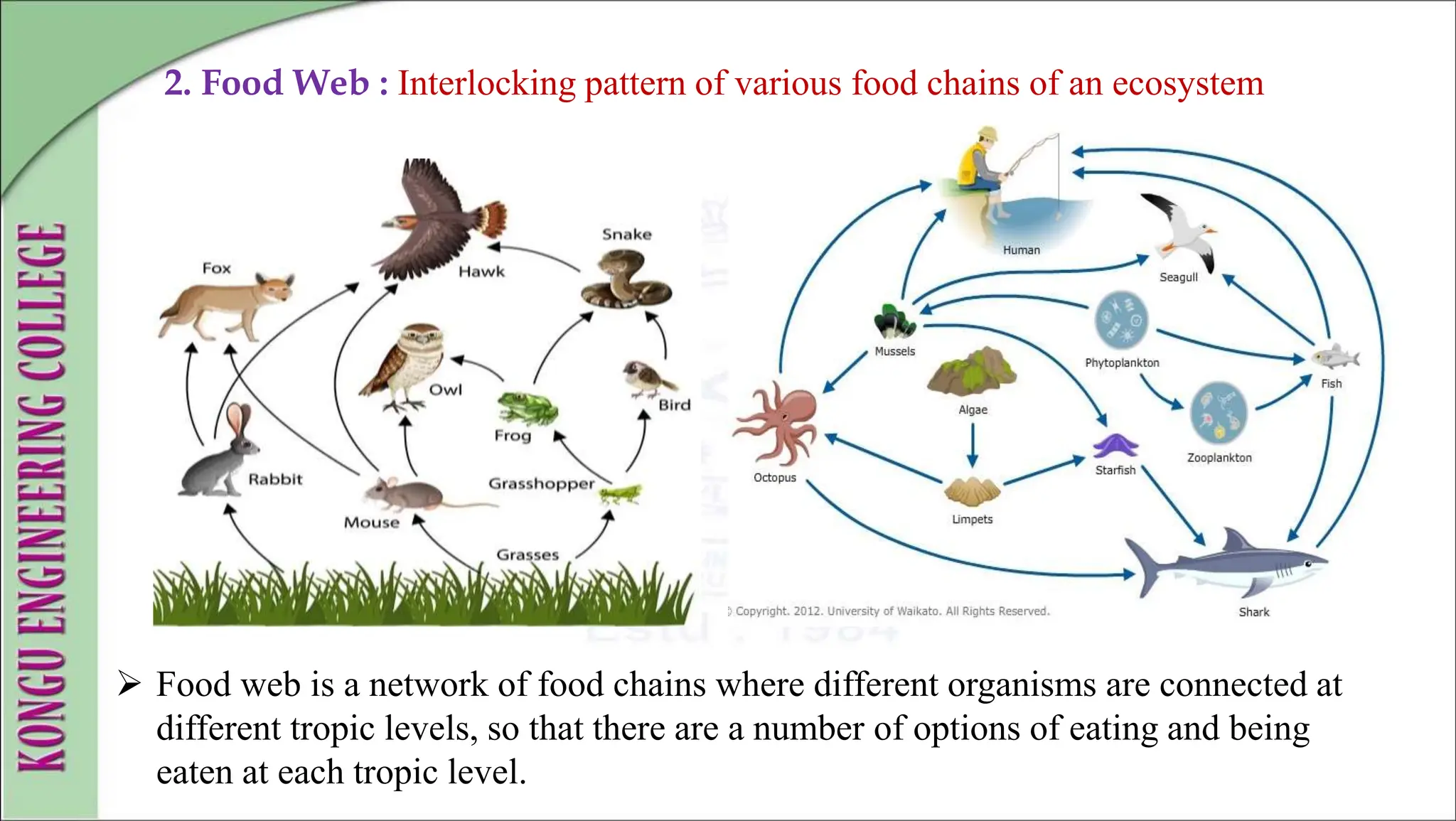The document discusses the structural and functional components of ecosystems, emphasizing the interaction of biotic and abiotic elements. It covers the classification of organisms into autotrophs, heterotrophs, and decomposers, and explains the significance of food chains and food webs in energy flow and nutrient cycling. A case study on bio-magnification of DDT illustrates the accumulation of toxins through trophic levels, highlighting environmental concerns.
















